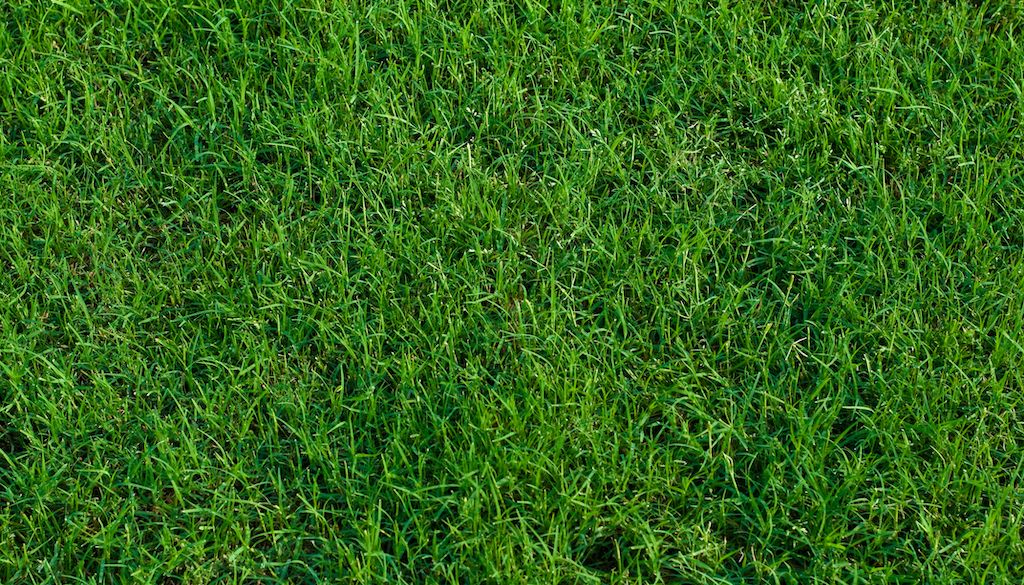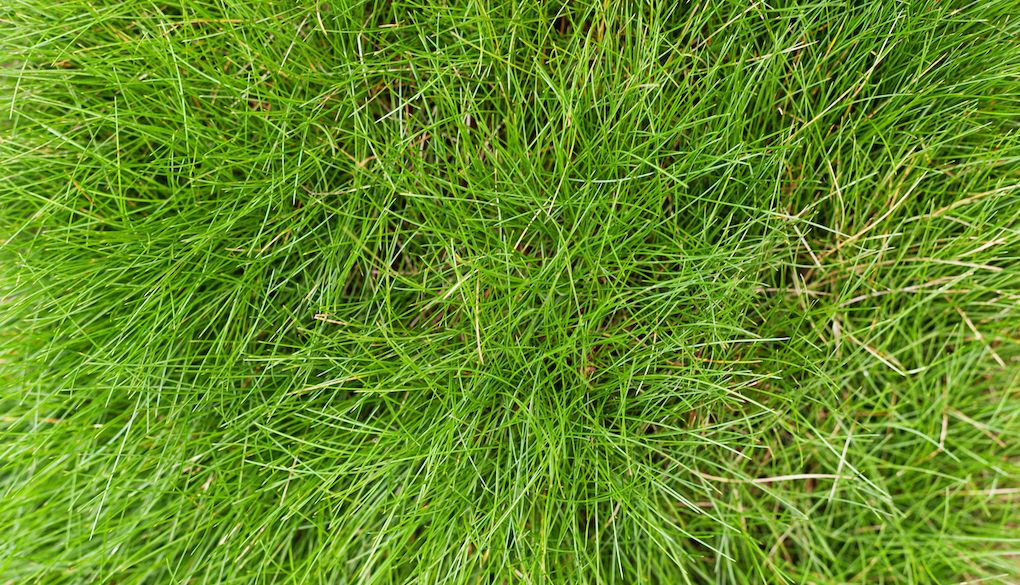Fescue vs. Bermuda grass comparison chart.
Here’s a side-by-side comparison of the two grass types so you can quickly spot the similarities and differences:
| | Bermuda | Fescue |
Growing season | Warm-season grass that grows in spring, summer and early fall | Cool-season grass that thrives in fall and early spring |
Dormant season | Winter | Winter but can go dormant in summer |
Texture | Mostly medium to coarse texture; hybrids can have a fine texture | Tall fescue is coarse but fine fescue is available |
Appearance and color | Typically gray-green or blue-green and dense, but can range from light-dark green; can turn brown in cold weather | Light to dark green; some fine fescue can have powdery blue-green color or dark grayish-green/blue-green color |
Mowing height | 1-2 inches | 3½ -4 inches |
Mowing frequency | Weekly | Weekly |
Drought tolerance | High | Moderate |
Cold tolerance | Low | Moderate |
Shade tolerance | Low | Moderate/high |
Salt tolerance | High | Moderate |
Foot traffic tolerance | High | Moderate |
What is Bermuda grass?
Bermuda grass is a drought-tolerant, durable grass that’s among the most popular warm-season grasses. You may see it on golf courses in Southern states because of its ability to thrive in sunshine and heat. It’s ideal for heavy foot traffic areas like athletic fields and lawns that get lots of sunshine.
Bermuda grass grows best in warmer temperatures. Because it’s a warm-season grass, you’ll want to aerate your lawn in early summer or late spring to help ensure it gets proper lawn care.
What does Bermuda grass look and feel like?
 Bermuda grass looks like a light to dark green long grass weed. It has a fine-to-medium texture that feels like turf.
Bermuda grass looks like a light to dark green long grass weed. It has a fine-to-medium texture that feels like turf.
Pros and cons of Bermuda grass.
Consider the following pros and cons if you're considering Bermuda grass for your yard:
Pros | Cons |
Tolerates drought and full sunshine | Doesn’t grow well in shade or cold |
Produces a vibrant green color | Browns after extended periods without water |
Establishes and grows quickly | Speedy growth could invade landscapes and flower beds |
What is fescue grass?
Unlike Bermuda, fescue is a cool-season grass that's durable and can hold up well against foot traffic. Although it's a popular cool-season grass, it also has some heat and drought tolerance, especially when fescue lawns are watered and weeded regularly during warmer months. Fescue is a durable grass that can hold up against foot traffic.
There are different types of fescue grass, including tall fescue and fine fescue. Tall fescue grass is one of the most popular types, and fine fescue is versatile.
What does fescue grass look and feel like?
 Tall fescue grass has medium-to-dark green, wide blades that are coarse to the touch.
Tall fescue grass has medium-to-dark green, wide blades that are coarse to the touch.
Fine fescue has blades that are more narrow or bristle, and the coloring ranges from light to dark green. Sheep fescue (a type of fine fescue) can have a powdery blue-green color. Hard fescue (another type of fine fescue) can range from dark gray-green to blue-green.
Pros and cons of fescue grass.
In cooler climates, fescue grass can be a great option for green, durable lawns. The following pros and cons may influence your choice:
Pros | Cons |
It can establish and grow quickly | Is susceptible to summer patches and browning |
Moderate drought tolerance | May be prone to fungal disease |
Good shade tolerance | Coarse texture may not be pleasant to touch |
Requires less water than bluegrass or ryegrass |
Which one should you choose for your lawn?
If you live in a hot and/or humid climate, Bermuda grass may make more sense because of its high drought and sunshine resistance. It’s also ideal for high-foot traffic areas since it can resist wear and tear.
If you live in a cooler climate, consider fescue grass. It's better at resisting cold and shade. It can still moderately tolerate droughts — just not as well as Bermuda grass. You also have the choice to choose between coarse-texture tall fescue or fine fescue.
Hire a lawn care professional near you.
When in doubt about whether to choose fescue or Bermuda grass, it helps to consult a lawn care service. Local lawn care professionals can recommend the best type of grass for you based on your climate, shading, and other unique lawn characteristics.
Download Thumbtack to start searching for a lawn care pro near you.
FAQs
Can I mix Bermuda grass with fescue?
Is Bermuda or fescue easier to grow?